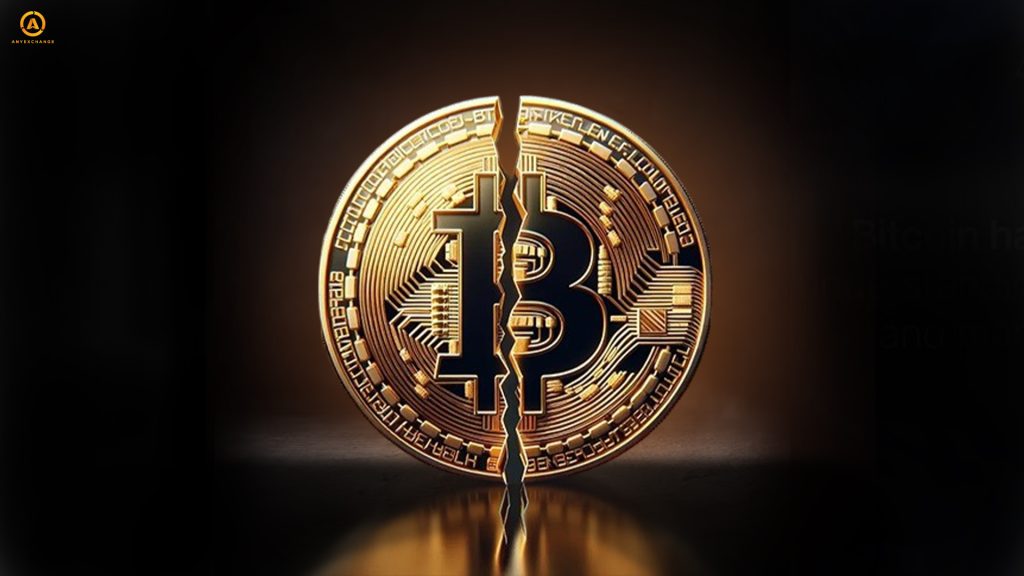
The halving of bitcoin is an event that the entire crypto market has been waiting for since its inception. The halving of the largest cryptocurrency by capitalization affects the entire ecosystem of digital assets, further intensifying processes in an already actively developing segment of the global economic market. It sets investors, miners, traders and developers in motion and opens new technological and financial perspectives. This year’s April halving did not manifest itself in a normal way, breaking the cycle of previous patterns.
In this article, we’ll look at the main aspects of the halving as one of the most important events in the world of cryptocurrencies, the main directions of its influence and the characteristics of the bitcoin halving in 2024.
What is bitcoin halving
Halving is a regular event for the first cryptocurrency, prescribed in the bitcoin source code of Satoshi Nakamoto. It is a deflationary mechanism that limits the maximum number of coins that can be issued. The creator of bitcoin wanted to invent an alternative to fiat money, which is subject to inflation due to unlimited issuance.
This mechanism cuts the reward to miners for mining new blocks in half, ensuring the finite issuance of BTC and the “rarity” of the coin. Bitcoin’s deflationary nature controls future supply, creating a potential coin shortage and a corresponding increase in demand. In other words, the halving creates difficulty in mining bitcoins, which increases their value (an analogy can be made here to mining rare metals).
Main characteristics:
The main purpose of halving as a change in bitcoin supply is to increase the value of the cryptocurrency as its availability decreases. A similar mechanism is also envisioned for other cryptocurrencies that operate using the PoW (Proof-of-Work) consensus algorithm.
Historical trends of bitcoin halving

- The first halving in 2012 reduced the reward for miners to create a new block from 50 BTC to 25 BTC, causing the bitcoin price to rise from $11 to $1,152 in one year (nearly 9000%).
- In 2016, the block reward was reduced again to 12.5 BTC, causing the coin’s value to rise from $664 to $2,560 within a year (by nearly 300%).
- A third halving in 2020 reduced the miner reward to 6.25 BTC, causing the price of bitcoin to rise from $8,727 to $55,000 (up 540%) over the next 12 months.
- The fourth halving in April this year set the miner reward at 3.125 BTC. And experts are currently watching to see if bitcoin’s post-halving price predictions will hold true.
It is already clear that past patterns do not guarantee an identical outcome, as the current cycle is unfolding against a backdrop of unique events and already has significant differences from past precedents. Traditionally, BTC trends have followed a certain pattern: prices rise, then halve, then correct, then peak again in about half a year. The 2024 halving is undoubtedly specific, as the next historical high was not reached at the end of the halving, as in previous times, but a month and a half before. And it is still unclear whether this was a warm-up before the start, or whether a new peak is no longer to be expected in the usual period of the cycle.
The main effects of the halving

What’s different in 2024
There has never been a BTC rally before the halving event
What makes this year’s halving unprecedented is that it occurred against the backdrop of bitcoin’s rally to another all-time high of $73,600, which the coin reached 38 days before the halving. In previous cycles, the price started to rise after the halving and peaked within a few months. This was the case in 2020, for example, when bitcoin took 10 months to surpass the previous record of $20,000.
Spot Bitcoin ETFs approved by the SEC in the United States
According to most analysts, bitcoin’s record growth this year was largely due to the successful launch of spot bitcoin ETFs on January 11, which gave institutional investors access to the first cryptocurrency. It was a long-awaited breakthrough, the effect of which preceded the usual halving of the price by playing a leading role in the coin’s rise. And this is perhaps the most obvious difference between the current halving and previous ones.
Blockchain security has improved
The bitcoin blockchain has become more secure and resistant to attacks, as its hash rate has increased fivefold since the previous halving.
Mining is moving to the big players
The share of public miners in the total bitcoin hash rate is 17% at the beginning of 2022, and 27% at the end of 2023. About 16% of it is concentrated in the hands of the 16 largest public mining companies. According to analysts, this trend will continue, and well-capitalized public miners will continue to buy up the assets of troubled smaller companies.
The effect of halving on mining companies
On the first day after the halving, 20.04.2024, commissions on the bitcoin network reached record highs. With a block size of 840,000, the Viabtc mining pool collected commissions of 37,626 BTC ($2.39 million). That night, the transaction value exceeded $240, and miners for several blocks earned millions in commissions in just a few hours. Then, in addition to Viabtc, Foundry, Braiins Pool and Antpool were the luckiest, with earnings of around $1 million.
Of course, after the first dizzying “cream skimmed”, the reduced reward for creating new blocks promises some changes in post-halving mining. Miners need an incentive. And the looming prospect of removing new block creation fees from the revenue structure has naturally focused their attention on profits from ongoing operations at the expense of transaction fees. In the current environment, miners are being forced to find ways to improve operational efficiency and competitiveness. Companies that can consolidate capital, reduce costs, and modernize equipment to maintain hash rate (the total computing power of the network) will stay afloat.
By April 2024, Bloomberg analysts were predicting potential mining company losses of up to $10 billion per year. To reduce the risk of losses, Marathon Digital, CleanSpark, Phoenix Group and other mining whales invested in new equipment and bought up smaller competitors. In a situation of dwindling revenues, those companies that can adapt quickly and efficiently to the coming changes will survive.
Bitcoin halving and energy consumption
The eco-friendliness of the first cryptocurrency has always been a controversial issue between cryptocurrency industry representatives and environmentalists. According to most experts, technically, the halving of bitcoin itself does not directly affect energy consumption in any way, since the power needs of mining devices do not change. And in this matter to reduce energy consumption is more important to reduce the principle of network functioning on the PoW algorithm, as well as the use of renewable energy sources, rather than the fact of halving as such. The halving of bitcoin and the associated demand for cryptocurrency does not have a negative impact on the environment. Miners are driven more by financial feasibility and will switch to greener mining methods if they are more profitable for them. Either way, the share of green energy in the activities of mining companies is increasing. This is due to both the desire for sustainable development and the demands of large investors who do not want to invest in projects that harm the environment.
What happens next
So, traditional predictions of a post-halving market in 2024 are not working yet. BTC peaked at $73.3k on March 14th and has been hovering around $60-65k ever since. Thus, the economic impact of the April 20th halving was less noticeable in the market than the spike caused by the launch of spot bitcoin ETFs in January. In any case, the strong inflow of investors thanks to the ETFs gave a strong boost amid the anticipation of the bitcoin halving, and global financial markets reacted to both events together.
Either way, any halving of the largest cryptocurrency triggers a fundamental shift in the entire sector. The halving of bitcoin and the market capitalization of the entire crypto industry are closely linked: BTC rises and the entire market follows.
The halving is seen as a positive event, and the associated bitcoin volatility is perceived by the industry as a temporary and natural order of things. The halving of bitcoin encourages long-term investment and even greater confidence in the largest cryptocurrency.
The impact of the halving on altcoins can be seen in the reallocation of assets due to the changing behavior of market participants seeking higher returns. In anticipation of the bitcoin halving, investors are diversifying their portfolios by investing BTC in promising altcoins to maximize returns. At the same time, the projects themselves are trying to attract the maximum amount of bitcoins to build reserves and reduce volatility.
It should be noted that the event carries certain risks in the short term, as the market situation can become speculative. Therefore, traders pay special attention to the choice of trading strategy during the halving.
Thank you for your attention. Explore educational resources about the bitcoin halving and the cryptocurrency market. Invest safely and profitably!
AnyExchange is an exchanger through which you can convert the most popular cryptocurrencies at the best rate . Anonymous and fast money transfers worldwide are also available on our website.






